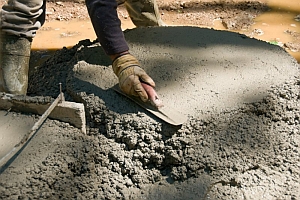Engineers at Drexel University in Philadelphia have developed a new cement that reduces energy use and carbon dioxide output by 97 percent compared to standard Portland cement. The research behind the new cement is described in the March 2012 issue of the journal Cement and Concrete Composites (paid subscription required).
The new type of cement includes iron slag, an industrial byproduct, plus ordinary limestone, and does not require heat to produce. The compound is activated with alkali, a base chemical. The common nature and ubiquitous sources of these materials reduce the cost of the Drexel cement by 40 percent versus Portland cement.
Portland cement requires firing in a kiln, which is the source of much of the energy use and carbon dioxide in its production process. The cement developed at Drexel contains up to 68 percent unfired limestone, a material that is plentiful, inexpensive, and low in carbon dioxide.
Industry standards, set by ASTM, limit the limestone content of Portland cement to 5 percent, however. Therefore commercialization of the discovery will require the new cement to meet ASTM standards for performance, strength, and setting time.
Alex Moseson, an engineering professor at Drexel leading the research, did work in India with the cement, that developed products meeting local standards and with local materials and techniques. His work with the more sustainable cement focused on making quality building materials more affordable and accessible to populations living in Indian slums, and creating jobs with small-scale cement manufacturing.
Moseson founded and serves as principal scientists Greenstone Technologies, a company that plans to take the discovery to market.
Read more: Recycled Haitian Concrete Found Safe, Strong
* * *


 RSS - Posts
RSS - Posts
You must be logged in to post a comment.